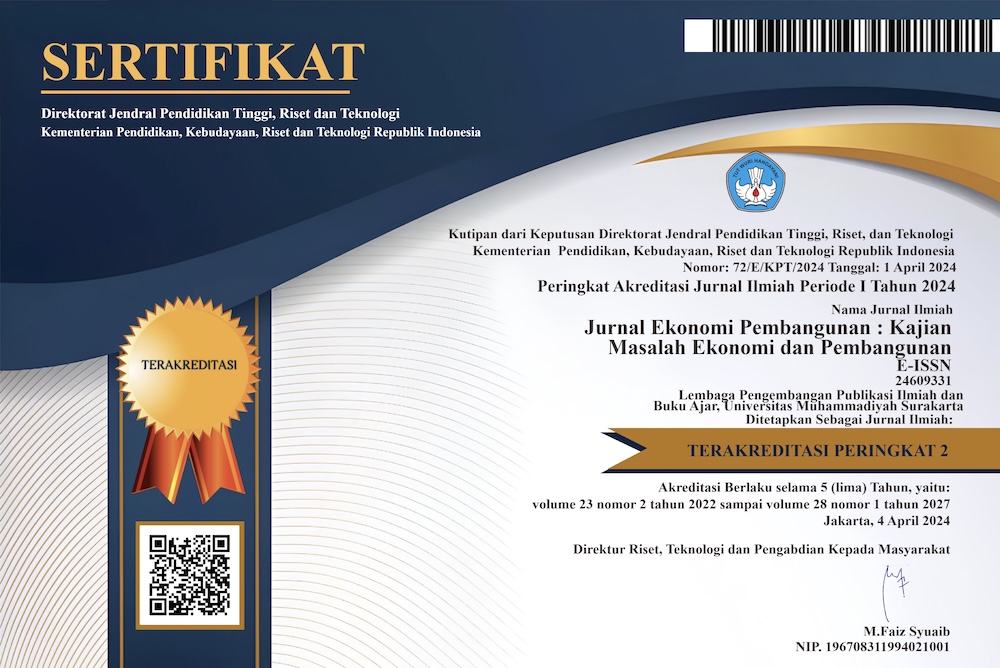Determinants of Foreign Direct Investment Inflows in Seven ASEAN Countries During the Period of 2010-2017: Dunning Model Approach
DOI:
https://doi.org/10.23917/jep.v22i1.11180Keywords:
Foreign Direct Investment, ASEAN, Dunning ModelAbstract
Before the monetary crisis in 1998, ASEAN was one of the main objectives of Foreign Direct Investment (FDI) and after the crisis, FDI inflows in ASEAN were still fluctuating, but tended to slowly increase. However, in 2009, there was a drastic decline in the FDI. The study aims to establish the determinants of FDI Inflows in 7 ASEAN countries in the period of 2010-2017. This study employs quantitative analysis through the Dunning Model Approach. As the technique of analysis, the Panel Data Regression analysis with Fixed Effect Model is used. The results of this study indicate that the Real GDP and Corruption Perception Index have positive and significant effects on FDI Inflows; while Exchange Rate, ICT Development Index and Road Length have negative and significant effects on FDI Inflows. Trade Openness has no effect on FDI Inflows. The reslts also show that FDI Inflows to the seven ASEAN countries are labour-intensive FDI, low technology FDI, driven by market seeking investment motives and fulfil the needs of the local market, not export-oriented FDI and seeking profit from resources with the availability of resources overflow with better quality.















